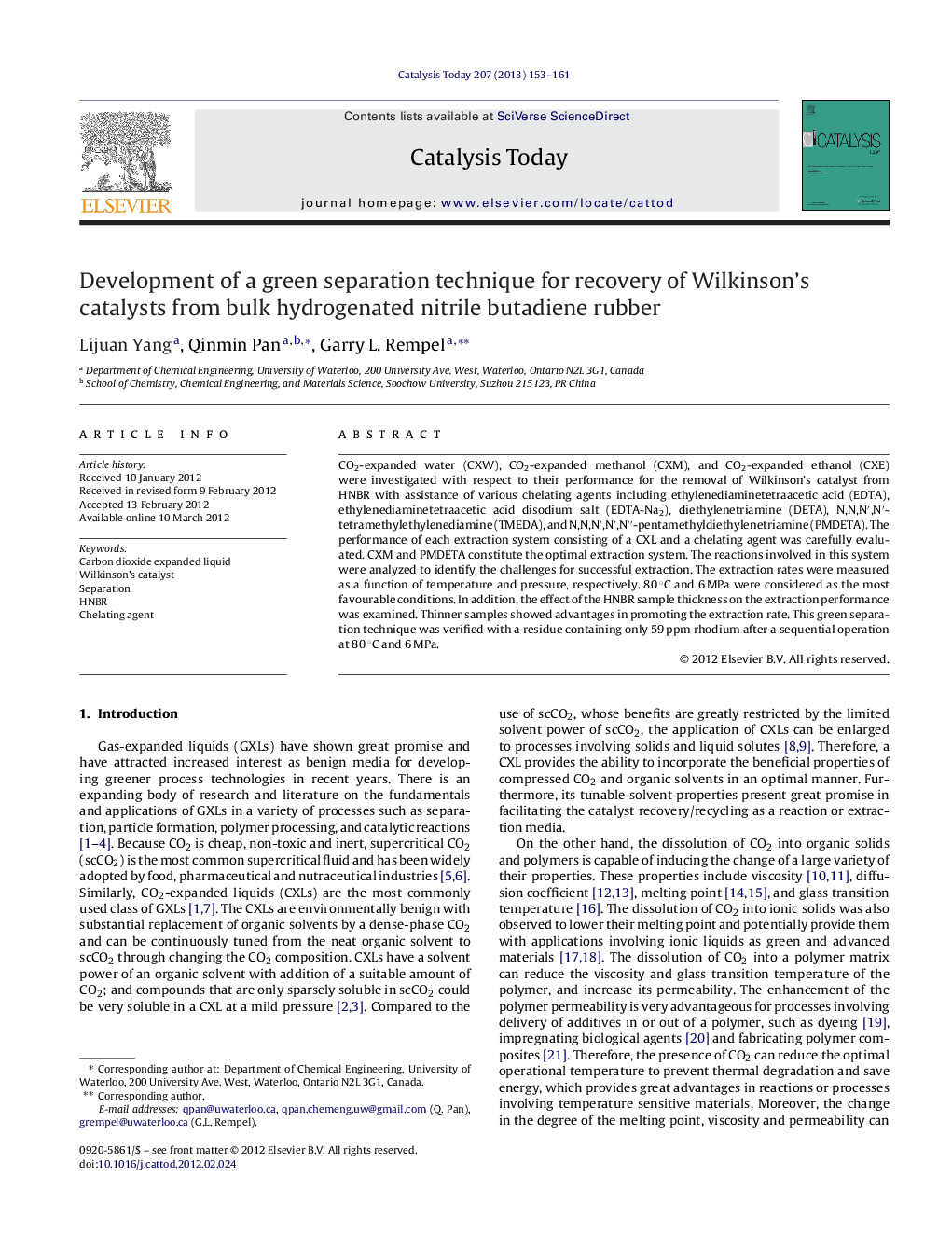| کد مقاله | کد نشریه | سال انتشار | مقاله انگلیسی | نسخه تمام متن |
|---|---|---|---|---|
| 54872 | 47029 | 2013 | 9 صفحه PDF | دانلود رایگان |

CO2-expanded water (CXW), CO2-expanded methanol (CXM), and CO2-expanded ethanol (CXE) were investigated with respect to their performance for the removal of Wilkinson's catalyst from HNBR with assistance of various chelating agents including ethylenediaminetetraacetic acid (EDTA), ethylenediaminetetraacetic acid disodium salt (EDTA-Na2), diethylenetriamine (DETA), N,N,N′,N′-tetramethylethylenediamine (TMEDA), and N,N,N′,N′,N″-pentamethyldiethylenetriamine (PMDETA). The performance of each extraction system consisting of a CXL and a chelating agent was carefully evaluated. CXM and PMDETA constitute the optimal extraction system. The reactions involved in this system were analyzed to identify the challenges for successful extraction. The extraction rates were measured as a function of temperature and pressure, respectively. 80 °C and 6 MPa were considered as the most favourable conditions. In addition, the effect of the HNBR sample thickness on the extraction performance was examined. Thinner samples showed advantages in promoting the extraction rate. This green separation technique was verified with a residue containing only 59 ppm rhodium after a sequential operation at 80 °C and 6 MPa.
Figure optionsDownload high-quality image (228 K)Download as PowerPoint slideHighlights
► Three CO2-expanded liquids were examined on separating Wilkinson's catalyst from HNBR with assistance of five chelants.
► CO2-expanded methanol and PMDETA constituted the optimal extraction system. The challenges in this process were identified.
► Extraction rate was investigated as a function of temperature, pressure and HNBR sample thickness.
► 80 °C and 6 MPa were the optimal conditions. Thinner samples showed better performance.
► This technique was verified with a residue of 59 ppm rhodium for the coagulated HNBR particles.
Journal: Catalysis Today - Volume 207, 30 May 2013, Pages 153–161